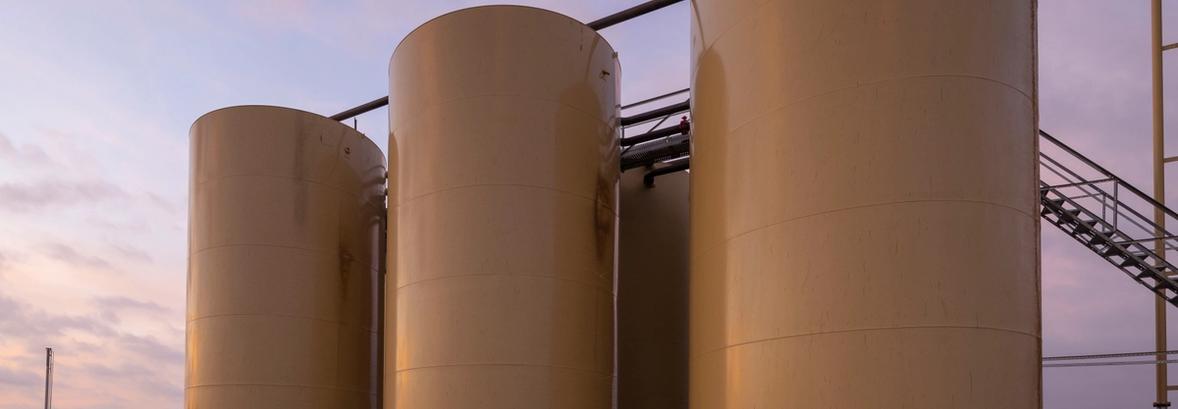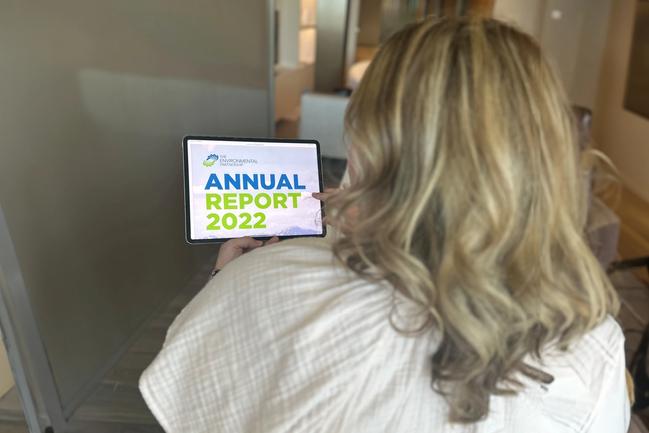

GHG Emissions Reductions
Our results have outpaced our target and we have surpassed our 2022 GHG emissions intensity reduction target of 40%, with an actual reduction of 47% compared to our 2019 baseline. This reduction was driven by improvements in gas capture and utilizing advanced emissions reduction technologies (described in more detail on page 52). We are on track to achieve our 2025 GHG emissions intensity reduction goal of 50% early and to meet our 2030 GHG emissions intensity reduction goal of 70% based on currently established emissions factors and calculation methodologies.
Our annual GHG emissions intensity metric is included in our corporate scorecard and linked to executive and employee pay. Our employees are committed to our emissions reduction goals and are proactively generating innovative ways to drive further emissions out of our business.
Marathon Oil believes that emissions intensity is a more appropriate way to measure improvement as impacts due to production changes are incorporated. However, we also saw a significant decline in our absolute GHG emissions.
In 2022, total Scope 1 and 2 absolute emissions were 53% lower than our 2019 absolute emissions baseline. Our corporate internal audit team validates our emissions calculation process and data. This exercise assists in identifying process weaknesses to minimize the potential for errors and improve accuracy. In 2019, Marathon Oil conducted a methodology audit of GHG calculations under EPA regulations, followed by an internal audit supported by an external consultant in 2021.
The electricity we use is primarily provided by regulated entities, which limits our ability to directly purchase renewable power. We utilized renewable energy credits to eliminate Scope 2 emissions on a net basis. Our calculation methodology is footnoted below¹.

Eagle Ford Reduces Absolute GHG Emissions by 18%
Between 2021 and 2022, our team in the Eagle Ford reduced the asset’s absolute GHG emissions by approximately 18%. This reduction primarily resulted from operational improvements, including investing in new technology that enabled the team to automate the shut-in process on wells. This enhancement allows the team to manage operational events more safely and efficiently, while minimizing flaring. Additional investments aided in the conversion of gas-controlled pneumatics to instrument air, which eliminated direct methane emissions.
We also implemented digital surveillance applications that monitor flare volumes and allow operations to react quickly to potential upset events or issues within our facilities. These applications incorporated multiple data systems to alert operations teams to take immediate action.
A small portion of the decrease was due to upgrading our compressor control panels. This helped us optimize our engine performance and resulted in more accurate estimation of our emissions.
- ᵃ Gross Basis
- ᵇ Proposed changes to greenhouse gas warming factors by the EPA if finalized will increase the percent of emissions attributable to CH4 due to a calculation methodology change rather than performance.
- ᵃ Tonnage by source is gross and does not include impact from offset retirement.
- ᵇ Source categorization for tank flaring changed from process emissions to flaring for 2022 to align with peers.
- ᶜ Percentages do not total 100% due to rounding.
- ᵃ Greenhouse gas (GHG) carbon dioxide equivalent (CO₂e) emissions are based on carbon dioxide, methane and nitrous oxide from Marathon Oil-operated facilities only.
- ᵇ U.K. assets divested in 2019.
- ᶜ 2021 value is net GHG, incorporating 12,500 MT of retired REDD+ offsets for each asset and REC offset for Scope 2 emissions.

The Environmental Partnership (TEP)
We are a founding member of TEP, an industry initiative committed to continuously improving the industry’s environmental performance by employing practices that reduce methane emissions.
TEP actively promotes connection among operators to help member companies learn from each other. Collectively, TEP member companies have reduced gas flaring intensity by ~45% since 2019, conducted more than 340 million leak detection inspections and replaced nearly 30,000 pneumatic controllers with lower or non-emitting technologies.
How are we doing?
Your opinion matters. Please take a moment to let us know how useful you find the content on this page.
If you’d like to give us your feedback on the entire report, please fill out the complete survey for the 2022 report.



















